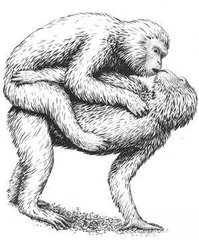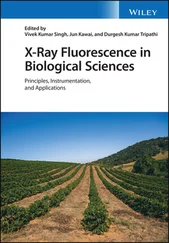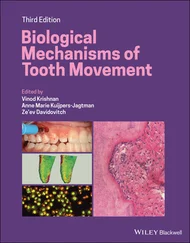Because of the diversity and complexity of homosexual expression across a wide range of species, it is not always a straightforward matter to calculate various measures of frequency such as these. Three different species exemplify some of the issues that are involved in just one measure of frequency, the proportion of sexual activity that is homosexual. Observed versus actually occurring behaviors in Giraffes, seasonal variations in sexual activity in Mountain Sheep, and alternative standards of reference in Gray Herons complicate the calculation of homosexual frequency in each of these species. During an exhaustive study of Giraffes in the Arusha and Tarangire National Parks of Tanzania, researchers recorded 17 homosexual mounts and 1 heterosexual mount in more than a year (and 3,200 hours) of observation. Thus, 94 percent of all observed mounting activity was same-sex. Does this reflect the actual proportion of homosexual activity in Giraffes? Certainly more than one heterosexual mating occurred during that time, since over 20 calves were born that year in one population alone. However, these populations did have relatively low birth rates, and heterosexual mating appeared to be genuinely rare. In addition, if heterosexual matings were being missed by the observers, probably homosexual ones were as well (unless same-sex mountings consistently took place in a more visible setting than opposite-sex ones). This means that the same proportion of homosexual activity could have been involved regardless of whether some mountings were missed. 42In Mountain Sheep, there are sharp seasonal differences in the proportion of same-sex activity. During the rut (about two months out of the year), approximately a quarter of all mounts are between males; during the rest of the year, virtually all mounts are homosexual, although only a small fraction of rams’ interactions with each other involves mounting. 43Thus, homosexual activity is more common during the rut if frequency rates, time budgets, or absolute numbers are tallied, but more prevalent outside the rut if proportions of sexual activity are calculated. Gray Herons, like many other birds, often engage in promiscuous copulations: males try to mate with birds, both male and female, other than their partner. One study revealed that about 8 percent of such promiscuous copulation attempts were homosexual. However, if the total number of copulations—both promiscuous and between bonded partners—is taken as the point of reference, the proportion of homosexual mounting drops to 1 percent. 44As these three examples show, differences between populations, seasons, and behaviors (among other factors) must be taken into consideration when assessing frequency.
Recognizing that measures of frequency often obscure important behavioral distinctions between (and within) species and may reflect widely divergent observational methodologies, it is nevertheless still useful to compare the prevalence of various homosexual activities across a wide variety of animals. The following summaries focus on the proportion of three behavioral categories—courtship, sexual, and pair-bonding—that occur between animals of the same sex, as well as the percentage of the population that engages in homosexual activity. These measures are the most widely available for a large number of animals, and they lend themselves fairly well to cross-species comparisons. Interestingly, similar average proportions are obtained for a number of these measures, even though they represent many different species and behaviors. 45
In those animals where homosexual activity occurs, an average of about a quarter of individuals in the population (or of a given sex) engage in same-sex activity—ranging from 2–3 percent of male Ostriches and female Sage Grouse, to nearly half of all male Giraffes and Killer Whales, to entire troops of Bonobos. Concerning specific behaviors, an average of about 25 percent of courtship activity occurs between animals of the same sex in those species that exhibit homosexual courtship interactions—ranging from less than 5 percent in Herring Gulls and Calfbirds, to more than 50 percent in Dwarf Cavies and Giraffes. A nearly identical proportion of sexual activity, just over one-quarter, occurs between animals of the same sex in those species where homosexuality has been observed—from as little as .3 percent in Silvery Grebes and 1–2 percent in Dusky Moorhens and Tasmanian Native Hens, to more than half of all sexual activity in Bison and Bonnet Macaques, and a whopping 94 percent of observed mountings in some populations of Giraffes (as mentioned above). Finally, an average of 14 percent of all pairs are homosexual in those species that have some form of same-sex (and opposite-sex) pair-bonding: ranging from as few as .3–.5 percent in Herring Gulls and Snow Geese, to more than a quarter of all consortships (on average) in Japanese Macaques, to more than half of all pair-bonds among young Galahs.
Combining these three behavioral categories yields a figure of just over 20 percent: roughly one-fifth of all interactions, on average, are homosexual in mammal and bird species that have at least some form of same-sex courtship, sexual, and/or pair-bonding activities. If one figure could be said to represent the overall frequency of homosexual activity in animals, this would probably be the one—but it is virtually impossible to come up with a truly “representative” number. A figure such as this collapses a multiplicity of behaviors (both between and within species), it represents only a fraction of the animals in which homosexuality has been documented, it glosses over many observational and theoretical uncertainties (not the least of which is widely differing sample sizes), and it misleadingly equates often radically unlike phenomena (different forms of heterosexual and homosexual behaviors, disparate social contexts, and so on). A less satisfying, but ultimately more meaningful, “formula” for understanding frequency is to recognize that there is no one overall frequency, no single formula. As in all aspects of animal homosexuality, different species exhibit an extraordinary range of rates, quantities, periodicities, and proportions of same-sex behavior—a diversity that is equal to the variation in the behaviors themselves. We can make tallies for particular species, develop formulas for certain populations or behaviors, and calculate percentages, time budgets, and so on—thereby trying to gain some overall impressions regarding the prevalence of homosexuality in animals. In the end, though, we must acknowledge that our measures are at best imperfect—and what we are attempting to quantify is, in many senses, incalculable.
Within Genders, Without Genders, Across Genders
The traditional view of the animal kingdom—what one might call the Noah’s ark view—is that biology revolves around two sexes, male and female, with one of each to a pair. The range of genders and sexualities actually found in the animal world, however, is considerably richer than this. Animals with females that become males, animals with no males at all, animals that are both male and female simultaneously, animals where males resemble females, animals where females court other females and males court other males—Noah’s ark was never quite like this! Homosexuality represents but one of a wide variety of alternative sexualities and genders. Many people are familiar with transvestism or transsexuality only in humans, yet similar phenomena are also found in the animal kingdom. Although this book focuses primarily on homosexuality, it is helpful to compare this with related phenomena that are often confused with homosexuality, and to discuss some specific examples of each.
Many animals live without two distinct genders, or with multiple genders. In hermaphrodite species, for instance, all individuals are both male and female simultaneously, and hence there are not really two separate sexes; in parthenogenetic species, all individuals are female and they reproduce by virgin birth. A number of other phenomena in the animal kingdom—for which we will use the cover term transgender —involve the crossing or traversing of existing gender categories: for example, transvestism (imitating the opposite sex, either behaviorally, visually, or chemically), transsexuality (physically becoming the opposite sex), and intersexuality (combining physical characteristics of both sexes). 46
Читать дальше












